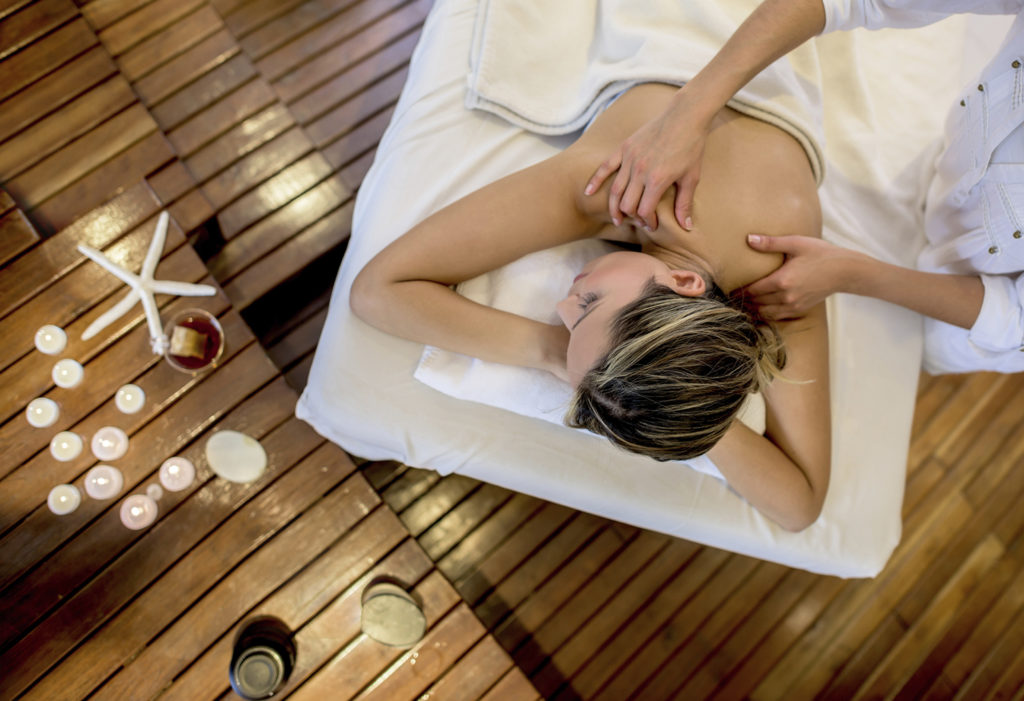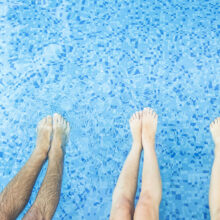What is Ayurvedic Massage?
- Published: Thursday, October 11th 2018
- in Living Well

Origins:
Ayurvedic Massage is based on ancient Indian principles of Ayurveda and pressure points, designed to heal the body and create a balance between mind, body, and spirit.
The word “ayurveda” is a Sanskrit compound: ayu, meaning “life,” and veda, meaning “knowledge.”
Sometimes translated as “science of life,” Ayurveda lays out a complete mind-body prescription for healthy living that includes a dietetic regimen and a body of herbal healing techniques.
Many of the dietary guidelines—say, for example, eating freshly prepared organic foods and varying the diet by including six different tastes—dovetail with Western nutritional thinking.
Ayurvedic massage is a customized treatment incorporating essential oils, typically herbal-infused, with time-honored and non-traditional strokes and kneading that suit each individual’s needs.
Movement flow can be quick or drawn out, depending upon the person; some spas provide two therapists working on one guest simultaneously.
Background Basics
When you get right down to it, balance is the keystone of Ayurveda.
The philosophy holds that there are three basic constitutions, or doshas—vata, pitta, and kapha—that make up our physical, mental, and emotional selves. One dosha usually dominates, but ideally the three exist in harmony.
That’s the healthy state. When the doshas get out of balance, illness can result.
According to believers, Ayurveda’s lifestyle guidelines keep the doshas in equilibrium and the herbal remedies and proper diet realign them. It’s an approach that’s remarkably in line with current thinking about healthy living, as well as increasing scientific evidence that the mind and body interact to maintain health and fight disease.
Because Ayurveda concentrates on wellness, it picks up another contemporary tailwind—skepticism toward and frustration with Western medicine.
Yoga, meditation, and massage are key components, and for devotees, there’s even Ayurvedic astrology and Ayurvedic architecture (à la feng shui).
Ayurveda aficionados believe that the system was intuited from the divine by rishis, or seers, five millennia ago. It remains India’s traditional system of health care (and is often the backdrop to Western care)—with an estimated 80 percent of the population practicing it!
Popular Ayurvedic massage treatments include the Indian head massage; Abhyanga, an herbal massage, and Shirodhara, a quick treatment during which a stream of oil is poured in the center of the forehead to help the individual focus, concentrate, and relax the mind and body.
Ayurveda Glossary:
Dosha: The Central Concept
A dosha is akin to the Western idea of constitution, a bodily principle that determines physiology and personality. Ayurvedic belief holds that there are three doshas—vata, pitta, and kapha. Everyone has all three, but in varying degrees. (It’s rare for a person to have equal amounts of each one.) One dosha is usually dominant, but it changes as we age, with kapha preeminent during childhood, pitta from puberty to middle age, and vata taking over at around 55. When the doshas are in harmony, a person is healthy. To find your dosha, take the Dosha Quiz
Vata: The ruling elements are air and ether (or space). Characteristics: very short or tall and thin, dry skin, creative, restless, excitable. Irregularity in action and fluctuation in thought are characteristic of this personality.
Pitta: The ruling elements are fire and water. Characteristics: well-built, good digestion and metabolism, intelligent, bold, hot-tempered. Tend to be perfectionists.
Kapha: The ruling elements are water and earth. Characteristics: heavyset, slower moving, slower digestion, calm, forgiving, reliable, envious, possessive.
Pulse diagnosis: The primary means for determining an individual’s dosha. The index, middle, and ring fingers are applied to the wrist, with each reading one dosha (index reads vata, middle reads pitta, ring reads kapha). The strongest pulse is the predominant dosha.
Agni: The digestive power of the individual or, as Ayurvedic Institute founder Vasant Lad puts it, “the biological fire that governs metabolism.” There are 13 types, the most important of which is jatharagni, which is basically the enzymes in the digestive tract.
Ama: Toxins that can be created by undigested food in the intestines. Lad calls it “the root of all disease.”
Ojas: The opposite of ama, the vital life energy that Ayurveda seeks to maximize. Symbolized as eight precious drops that live in your heart. Two types: apara ojas, an inherent energy present from conception, and para ojas, produced by proper eating, activity, and breathing.
Panchakarma: Literally “the five ways,” a system to eliminate toxins via laxatives, enemas, vomiting, tongue scraping, blood purification, and nasal administrations.
Vaidya: An Ayurvedic physician from India.



